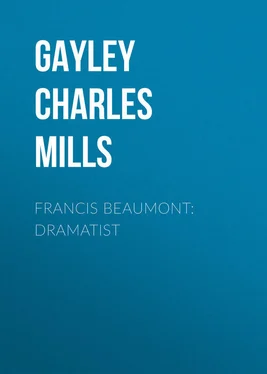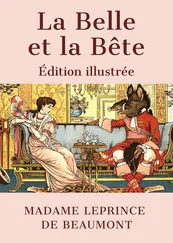Charles Gayley - Francis Beaumont - Dramatist
Здесь есть возможность читать онлайн «Charles Gayley - Francis Beaumont - Dramatist» — ознакомительный отрывок электронной книги совершенно бесплатно, а после прочтения отрывка купить полную версию. В некоторых случаях можно слушать аудио, скачать через торрент в формате fb2 и присутствует краткое содержание. Жанр: cinema_theatre, foreign_antique, foreign_prose, Биографии и Мемуары, на английском языке. Описание произведения, (предисловие) а так же отзывы посетителей доступны на портале библиотеки ЛибКат.
- Название:Francis Beaumont: Dramatist
- Автор:
- Жанр:
- Год:неизвестен
- ISBN:нет данных
- Рейтинг книги:5 / 5. Голосов: 1
-
Избранное:Добавить в избранное
- Отзывы:
-
Ваша оценка:
- 100
- 1
- 2
- 3
- 4
- 5
Francis Beaumont: Dramatist: краткое содержание, описание и аннотация
Предлагаем к чтению аннотацию, описание, краткое содержание или предисловие (зависит от того, что написал сам автор книги «Francis Beaumont: Dramatist»). Если вы не нашли необходимую информацию о книге — напишите в комментариях, мы постараемся отыскать её.
Francis Beaumont: Dramatist — читать онлайн ознакомительный отрывок
Ниже представлен текст книги, разбитый по страницам. Система сохранения места последней прочитанной страницы, позволяет с удобством читать онлайн бесплатно книгу «Francis Beaumont: Dramatist», без необходимости каждый раз заново искать на чём Вы остановились. Поставьте закладку, и сможете в любой момент перейти на страницу, на которой закончили чтение.
Интервал:
Закладка:
The external evidence for Beaumont's authorship of this metrical tale is, at the best, but slight. As regards the internal, however, I cannot agree with Fleay and the author of the article entitled Salmacis and Hermaphroditus not by Beaumont . 23 23 Dramaticus , (as above).
Both diction and verse display characteristics not foreign to Beaumont's heroic couplets in epistle and elegy, nor to the blank verse of his dramas, – though they do not markedly distinguish them. The romantic-classical and idyllic grace may be the germ of that which flowers in the tragicomedies; and the joyous irony is not unlike that of The Woman-Hater and The Knight of the Burning Pestle . The poem is a voluptuous and rambling expansion of the classical theme "which sweet-lipt Ovid long agoe did tell." The writer, like many a lad of 1602, has steeped himself in the amatory fable and fancy of Marlowe, Chapman, and Shakespeare; and the passionate imaginings are such as characterize poetic lads of seventeen in any period. It is not impossible that here we have Francis Beaumont's earliest attempt at a poem of some proportions, and that he was stirred to it by exercises like The Endimion and Phoebe of Drayton, probably by that time the friend of the Grace-Dieu family. Francis, indeed, need not have been ashamed of such a performance, for in spite of the erotic fervour and the occasional far-fetched conceits, the poet has visualized clearly the scenes of his mythological idyl, and enlivened the narrative with ingenuous humour; he has caught the figured style and something of the winged movement of his masters; and every here and there he has produced lines of more than imitative beauty:
Looke how, when Autumne comes, a little space
Paleth the red blush of the Summer's face,
Searing the leaves, the Summer's covering,
Three months in weaving by the curious Spring, —
Making the grasse, his greene locks, go to wracke,
Tearing each ornament from off his backe;
So did she spoyle the garments she did weare,
Tearing whole ounces of her golden hayre.
The earliest definite indication that I have found of Beaumont's literary activity, and of his recognition by poets, connects him with his brother John, and is highly suggestive in still other respects. John had already written, in 1603 or 1604, verses prefatory to Drayton's poetic treatment of Moyses in a Map of his Miracles , published in June of the latter year; and also, in 1605, to Drayton's revision of the Barrons Wars . On April 19, 1606, Drayton issued a volume entitled Poems Lyrick and Pastoral , which included with other verses a revision, under the name of Eglogs , of his Idea, the Shepheard's Garland , first published in 1593. In the eighth eclogue of this new edition, Drayton, writing of the ladies of his time to whom "much the Muses owe," adds to his praise of Sidney's (Elphin's) sister Mary, Countess of Pembroke, an encomium upon the two daughters of his early patron, Sir Henry Goodere, Frances and Anne (Lady Ramsford); then he celebrates a "dear Sylvia, one the best alive," and
Then that dear nymph that in the Muses joys,
That in wild Charnwood with her flocks doth go,
Mirtilla, sister to those hopeful boys,
My lovèd Thyrsis and sweet Palmeo;
That oft to Soar the southern shepherds bring,
Of whose clear waters they divinely sing.
So good she is, so good likewise they be,
As none to her might brother be but they,
Nor none a sister unto them, but she, —
To them for wit few like, I dare will say:
In them as Nature truly meant to show
How near the first, she in the last could go.
The "golden-mouthed Drayton musical" had spent his youth not many miles from "wild Charnwood," at Polesworth Hall, the home of the Gooderes, in Warwickshire. The dear nymph of Charnwood is Elizabeth Beaumont, in 1606 a lass of eighteen, – and the "hopeful boys" who bring the southern shepherds (Jonson, perhaps, and young John Fletcher, as well as Drayton) to their Grace-Dieu priory by the river Soar, are John, then about twenty-three, and the future dramatist, about twenty-two. 24 24 On these identifications, see Fleay, Chron. Eng. Dr. , I, 143-145; Elton, Michael Drayton , pp. 13, 58; Child, Michael Drayton (in Camb. Hist. Lit. , IV, 197, et seq. ).
Under the pastoral pseudonym of Mirtilla, Elizabeth is again celebrated by Drayton twenty-four years later, in his Muses Elizium . Since these Pastorals are in confessed sequence with those of "the prime pastoralist of England," and the pastoral Thyrsis and young Palmeo have already sung divinely of the clear waters of their native stream, it would appear that they too are disciples at that time of Master Edmund Spenser in his Shepheards Calender . And since these brothers, so like in wit and feature, and in charming devotion to their sister, are all the brothers that she has, it is evident that this portion of the Eglog was written after July 10, 1605; for up to that date, the eldest of the family, Henry, was still living, and at the manor house of Grace-Dieu. This friendship between Drayton and the "hopeful boys" continued through life; for, as we shall later note and more at length, in 1627, the year of John's death, and many years after that of Francis, the older poet still celebrates the twain as "My dear companions whom I freely chose My bosome-friends."
When James I made his famous progress from Edinburgh to London, April 5 to May 3, 1603, "every nobleman and gentleman kept open house as he passed. He spent his time in festivities and amusements of various kinds. The gentry of the counties through which his journey lay thronged in to see him. Most of them returned home decorated with the honours of knighthood, a title which he dispensed with a profusion which astonished those who remembered the sober days of Elizabeth." 25 25 Gardiner, Hist. Engl. 1603-1607, p. 87.
One of those thus decorated was the poet's brother Henry, who was dubbed knight bachelor at Worksop in Derbyshire, on the same day as his uncle, "Henry Perpoint of county Notts," and William Skipwith of Cotes in the Beaumont county – who appears later as a friend of Fletcher. Two days afterwards, Thomas Beaumont of Coleorton received the honour of knighthood at the Earl of Rutland's castle of Belvoir. 26 26 Shaw's Knights of Engl. , Vol. II, under dates.
Sir Henry of Grace-Dieu did not long enjoy his title. He died about the tenth of July 1605, and was buried on the thirteenth. By his will, witnessed by his brother Francis, and probated February 1606, Sir Henry left half of his private estate to his sister, Elizabeth "for her advancement in marriage," and the other half to be divided equally between John and Francis. He was succeeded as head of the family by John, 27 27 Grosart ( D. N. B. art. John Beaumont ) says that John had been admitted to the Inner Temple with Henry. John does not appear in Inderwick.
who later married a daughter of John Fortescue – also of a poetic race – and left by her a large family. The sister, Elizabeth (Mirtilla) probably continued to live at Grace-Dieu until her marriage to Thomas Seyliard of Kent. And that Francis occasionally came home on visits from London we have other proof than that afforded by Drayton. The provision of a competence made by Sir Henry's will leads us to conjecture that the subsequent dramatic activity of the younger brother was undertaken for sheer love of the art; and that, while his finances may have been occasionally at low ebb, the association in Bohemian ménage with John Fletcher, which followed the years of residence at the Inner Temple, was a matter of choice, not of poverty.
Интервал:
Закладка:
Похожие книги на «Francis Beaumont: Dramatist»
Представляем Вашему вниманию похожие книги на «Francis Beaumont: Dramatist» списком для выбора. Мы отобрали схожую по названию и смыслу литературу в надежде предоставить читателям больше вариантов отыскать новые, интересные, ещё непрочитанные произведения.
Обсуждение, отзывы о книге «Francis Beaumont: Dramatist» и просто собственные мнения читателей. Оставьте ваши комментарии, напишите, что Вы думаете о произведении, его смысле или главных героях. Укажите что конкретно понравилось, а что нет, и почему Вы так считаете.












